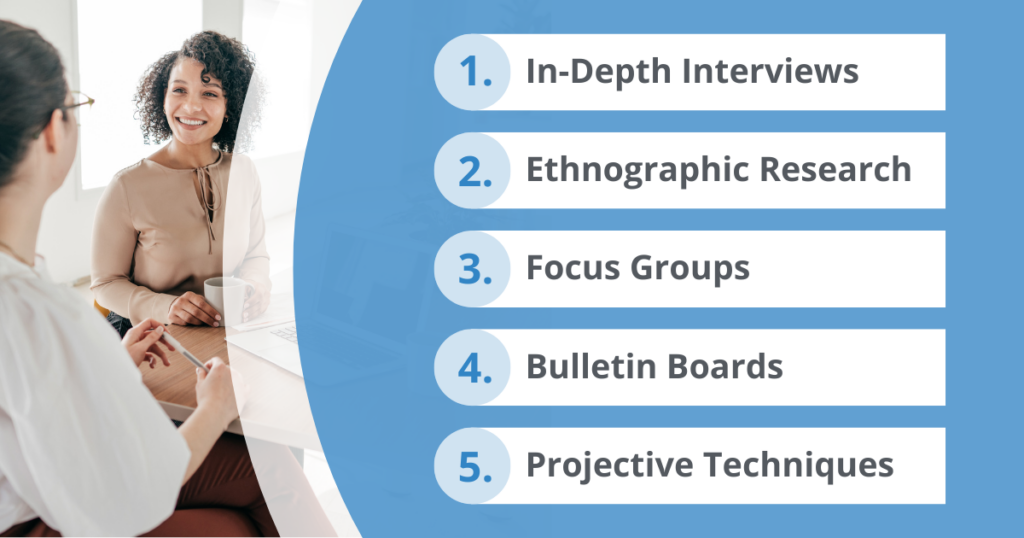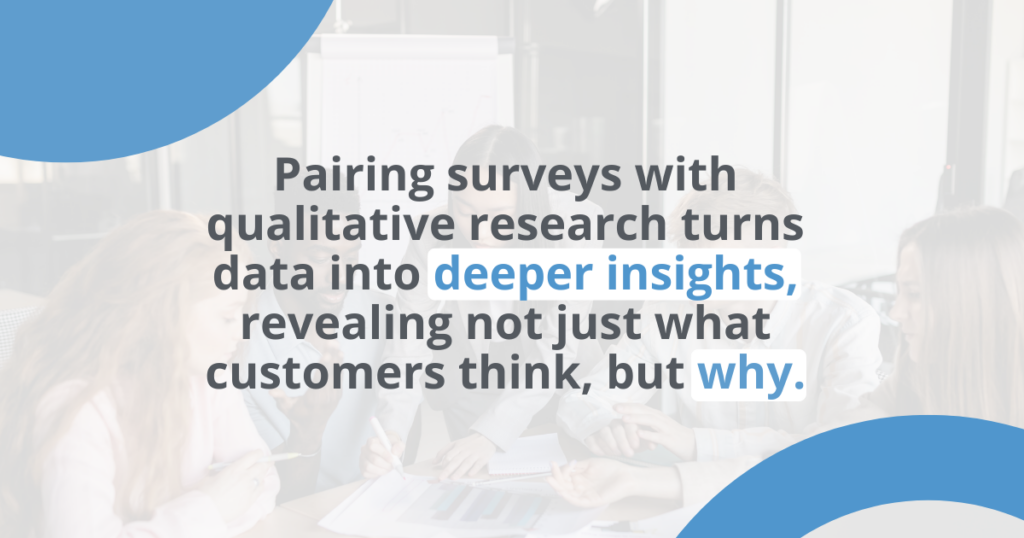Surveys are a staple in market research, helping businesses collect customer feedback at scale. They provide quick insights, track satisfaction levels, and reveal trends over time. But while surveys are helpful, they have a critical flaw: they don’t always tell the full story.
Whether intentionally or subconsciously, customers tend to hold back their true thoughts. They might choose answers that seem socially acceptable, rush through questions, or struggle to articulate what really drives their decisions.
So, how do you uncover the insights surveys miss? Let’s explore when surveys are effective—and when it’s time to go deeper.
When Surveys Are the Right Tool for the Job
Surveys are a powerful tool, but they work best in specific scenarios:
- Tracking Quantifiable Metrics: Surveys provide clear, numerical benchmarks when measuring Net Promoter Score (NPS) or Customer Satisfaction Score (CSAT).
- Comparing Trends Over Time: Surveys help track shifts in customer behavior, such as changing brand preferences or product satisfaction.
- Confirming Known Information: They work well for validating assumptions but are not ideal for uncovering entirely new insights.
- Gathering Broad Feedback Quickly: When businesses need a high-level snapshot of customer sentiment, surveys are a fast and scalable solution.
The Limitation: Surveys can tell you what customers think, but they rarely reveal why they think that way.
That’s where qualitative and hybrid research methods come in.
Why Survey Responses Don’t Tell the Full Story
Even when customers respond to surveys, their answers may not reflect their true thoughts or behaviors.
They might answer based on what they think the company wants to hear, choose the most convenient option rather than the most accurate one, or struggle to articulate their deeper motivations in a structured format.
Here’s why:
- Social Desirability Bias: Customers may provide answers they think are more acceptable rather than their honest opinions.
- Survey Fatigue: Frequent or lengthy surveys can lead to rushed, superficial responses.
- Lack of Emotional Nuance: Multiple-choice questions rarely capture the emotions that influence customer decisions.
- Unclear or Leading Questions: Poorly designed surveys can unintentionally shape responses, skewing results.
- Limited Context: Customers may not be fully aware of the subconscious factors influencing their behavior.
5 Ways to Uncover Hidden Insights

Sometimes, you have to go beyond surveys to get the full picture. Here are five ways businesses can tap into deeper customer insights:
1. In-Depth Interviews
There’s no substitute for talking directly to customers. One-on-one interviews let you dig into their experiences, frustrations, and motivations in a way that multiple-choice questions just can’t. By asking open-ended questions and following up, you’ll uncover what’s really driving their decisions.
For example, a subscription-based company assumed customers were canceling due to price—because that’s what their survey results showed. But after a few in-depth interviews, they learned the real issue: customers felt overwhelmed by too many product choices. Instead of lowering prices, they simplified their offerings, and cancellations dropped.
2. Ethnographic Research
People don’t always do what they say they do. That’s where observational research comes in. Instead of asking customers how they shop, interact with a product, or use a service, you watch them in action. This can uncover unspoken frustrations and habits that surveys would never reveal.
Take this example: A retail store noticed customers were constantly bypassing a specific aisle. No one mentioned it in surveys, but by observing shopper behavior, the company realized the aisle felt cramped and hard to navigate. A simple layout redesign made a huge difference in foot traffic and sales.
3. Focus Groups
Sometimes, the best insights come from bouncing ideas off others. Focus groups allow customers to share their thoughts in a relaxed, interactive setting. Unlike surveys, where responses are isolated, a focus group lets people react to each other’s experiences, which can give you unexpected insights.
A tech company ran a focus group to test a new user interface. While they expected feedback on color schemes and button placement, the real issue surfaced when participants started venting about how hard it was to navigate between features. That insight led to a redesign that improved the user experience for everyone.
4. Bulletin Boards
Not every customer insight comes from a one-time interaction. Bulletin boards and online communities allow businesses to engage with customers over days or weeks, gathering deeper insights into how opinions evolve over time. These platforms encourage customers to share experiences, complete activities, and discuss topics in a way that feels more natural than a one-off survey.
For example, a beauty brand used an online bulletin board to track how customers integrated a new skincare product into their routine. By checking in over several weeks, they discovered that while customers loved the product’s results, the packaging made it hard to use daily. This insight led to a more user-friendly redesign.
5. Projective Techniques
Sometimes, people don’t even know what’s influencing their decisions, which is why projective techniques, like sentence completion and image selection, are so valuable. Instead of asking customers directly, these methods use storytelling, word associations, and imagery to tap into subconscious thoughts and emotions.
For instance, a snack company wanted to understand how customers emotionally connected with their brand. Instead of asking them outright, researchers used a collage exercise where participants created mood boards representing how the brand made them feel. The results? Customers associated the brand with childhood nostalgia, which led the company to double down on messaging that emphasized tradition and family connections.
Blending Surveys and Qualitative Research for Deeper Insights

Surveys give you the “what,” but qualitative research uncovers the “why.” While each method has its strengths, businesses get the clearest picture when they combine surveys with qualitative techniques like interviews, observational research, and projective exercises. This hybrid approach allows companies to validate trends seen in survey data while also exploring the deeper motivations behind customer behaviors.
By layering different research methods, businesses can:
Identify patterns and validate assumptions: Surveys may show that customer satisfaction is dropping, but qualitative research can reveal why—whether it’s a frustrating user experience, unmet expectations, or evolving preferences.
Uncover hidden pain points: Ethnographic research or online bulletin boards can highlight friction points that customers don’t always articulate in survey responses.
Refine messaging and positioning: Projective techniques, such as word association or imagery exercises, can help brands understand the emotional connections customers have with their products and tailor marketing strategies accordingly.
Make more confident decisions: Businesses that blend quantitative and qualitative insights reduce guesswork, making it easier to optimize products, improve customer experience, and enhance loyalty.
Numbers Don’t Tell the Whole Story—Get the Full Picture With Qualitative Research
Surveys are a valuable tool, but they only scratch the surface of customer insights. To uncover what customers really think, businesses need to integrate qualitative research methods like interviews, observational studies, and behavioral analytics.
If you’re ready to move beyond surface-level data and gain deeper customer insights, we can help. Contact us today to learn how our research solutions can uncover the insights that drive real business growth.



